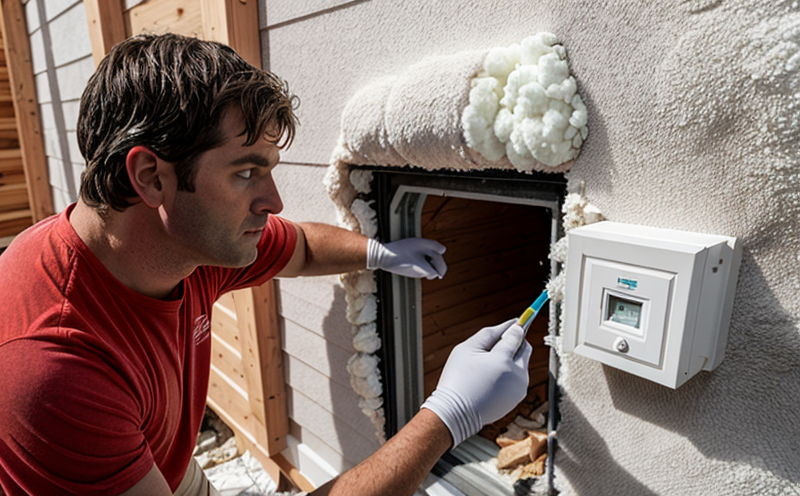EN 12664 Thermal Properties Evaluation of Materials
The European Standard EN 12664 provides a comprehensive method to evaluate the thermal properties of materials used in building and infrastructure applications. This standard is crucial for ensuring that materials meet specified performance criteria, particularly their thermal resistance (R-value), conductivity (k-value), and other relevant parameters.
This evaluation serves several critical purposes within the sector:
- Ensuring compliance with regulatory requirements
- Evaluating the efficiency of insulation systems in reducing heat loss or gain
- Supporting design choices that optimize energy performance
- Facilitating quality control and assurance during material production
The EN 12664 protocol involves detailed testing procedures aimed at providing accurate data on thermal properties. This process typically includes the preparation of specimens, exposure to standard conditions, and measurement using specialized equipment.
A key aspect is the use of guarded hot plate apparatus, which allows for precise determination of thermal conductivity by maintaining a constant temperature gradient across the specimen. Other parameters such as thermal diffusivity and specific heat capacity are also evaluated where relevant.
Once tested, the results are compared against specified acceptance criteria to ensure that the materials meet or exceed required standards. Compliance with EN 12664 is essential for manufacturers aiming to supply high-quality products that contribute positively to environmental sustainability and energy efficiency in construction projects.
Industry Applications
| Application | Description |
|---|---|
| Building Insulation | Evaluating the thermal performance of insulation materials used in walls, roofs, and floors. |
| Retrofitting Projects | Determining if existing building elements meet modern thermal efficiency standards. |
| New Construction Projects | Ensuring new buildings comply with energy-efficient design criteria. |
In retrofitting projects, for instance, EN 12664 helps assess whether the installed insulation meets current thermal performance standards. This is critical in upgrading old structures to improve their overall energy efficiency.
New construction projects benefit from this test by ensuring that materials used meet specified thermal properties before installation. This prevents subpar or non-compliant products from entering the market, thereby enhancing project quality and compliance.
Applied Standards
The EN 12664 protocol is aligned with other international standards such as ISO 8301-1, which provides guidelines for determining thermal conductivity of rigid materials. The standard also aligns closely with ASTM E595, which evaluates the thermal insulation properties of foamed plastics.
These interlocking standards ensure consistency and reliability in testing procedures across different regions. Compliance with these standards is essential not only to meet local regulations but also to facilitate global trade and collaboration within the industry.
Why Choose This Test
Selecting EN 12664 for thermal property evaluation offers several advantages:
- Precision: The standard provides a robust framework ensuring accurate measurement of thermal properties.
- Compliance: Ensures that materials comply with local and international regulatory requirements.
- Consistency: Provides consistent results across different testing facilities, enhancing reliability.
- Optimization: Helps in optimizing product design for better thermal performance.
The precision of EN 12664 is particularly important in sectors where even small deviations in thermal properties can lead to significant energy inefficiencies. By adhering to this standard, manufacturers and project managers can ensure that their products perform as expected under real-world conditions.
Compliance with these standards not only enhances product quality but also supports broader sustainability goals by promoting the use of more efficient materials.





